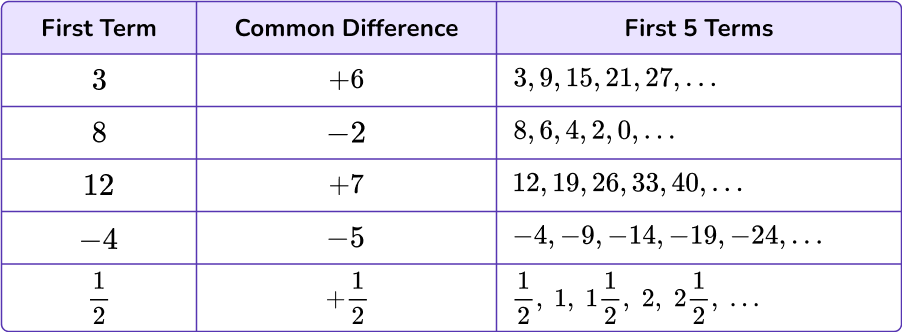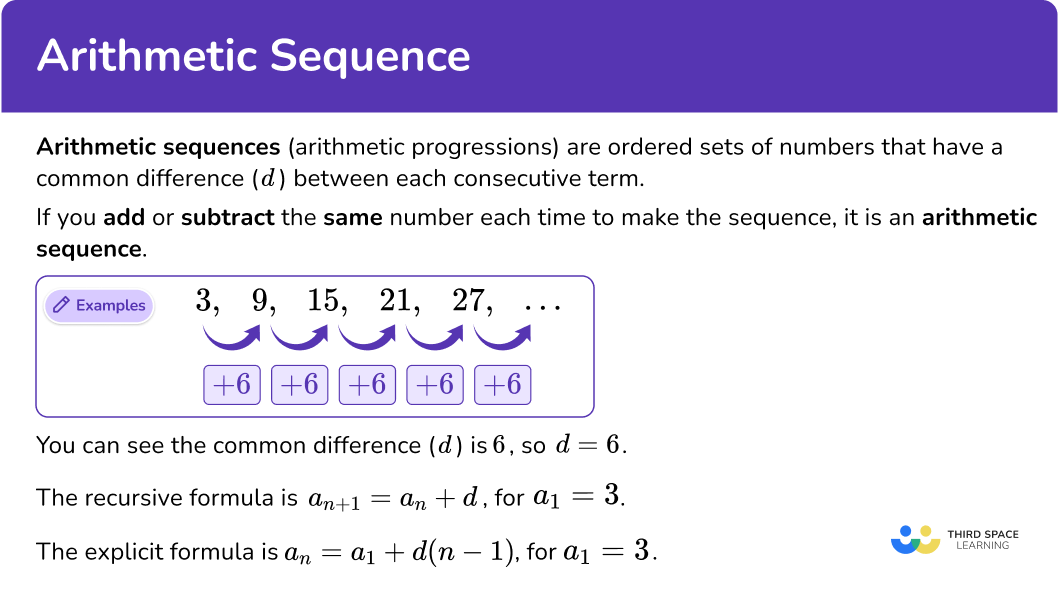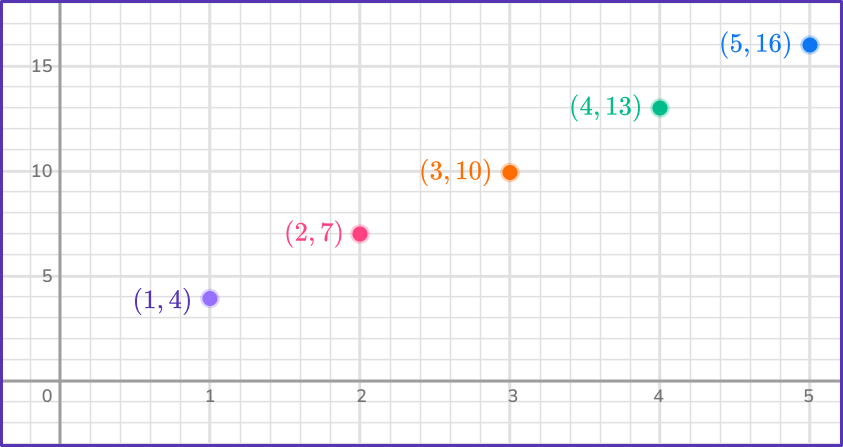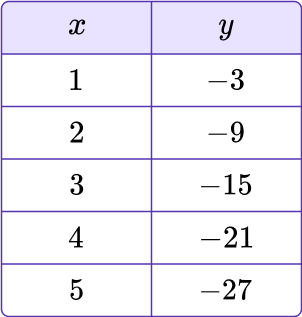
Here you will learn what an arithmetic sequence is, how to continue an arithmetic sequence and how to generate an arithmetic sequence.
Students will first learn about arithmetic sequences as part of algebra in high school.
Arithmetic sequences (arithmetic progressions) are ordered sets of numbers that have a common difference (d) between each consecutive term.
If you add or subtract the same number each time to make the sequence, it is an arithmetic sequence.

A recursive formula uses the previous number in the sequence to determine the successive number.
The arithmetic sequence recursive formula is:
a_ is the n th term (general term)
a_ is the term after n
n is the term position
d is the common difference
An arithmetic sequence uses the position of the n th term of a sequence to calculate the n th term.
The arithmetic sequence explicit formula is:
a_ is the n th term (general term)
a_ is the first term
n is the term position
d is the common difference
You create both arithmetic sequence formulas by looking at the following example:

You can see the common difference (d) is 6, so d=6.
The recursive formula is a_=a_n+d, for a_1=3.
\begin & a_2=a_1+6=3+6=9 \\\\ & a_3=a_2+6=9+6=15 \\\\ & a_4=a_3+6=15+6=21 \\\\ & a_5=a_4+6=21+6=27 \end
The explicit formula is a_n=a_1+d(n-1), for a_1=3.
\begin & a_2=3+6(2-1)=3+6(1)=9 \\\\ & a_3=3+6(3-1)=3+6(2)=15 \\\\ & a_4=3+6(4-1)=3+6(3)=21 \\\\ & a_5=3+6(5-1)=3+6(4)=27 \end

How does this relate to high school math?
![[FREE] Arithmetic Sequence Formula Worksheet (Grade 9 to 12)](https://thirdspacelearning.com/wp-content/uploads/2024/05/Arithmetic-Sequence-Worksheet-listing-image.png)
![[FREE] Arithmetic Sequence Formula Worksheet (Grade 9 to 12)](https://thirdspacelearning.com/wp-content/uploads/2024/05/Arithmetic-Sequence-Worksheet-listing-image.png)
Use this worksheet to check your grade 9 to 12 students’ understanding of arithmetic sequence formula. 15 questions with answers to identify areas of strength and support!
![[FREE] Arithmetic Sequence Formula Worksheet (Grade 9 to 12)](https://thirdspacelearning.com/wp-content/uploads/2024/05/Arithmetic-Sequence-Worksheet-listing-image.png)
![[FREE] Arithmetic Sequence Formula Worksheet (Grade 9 to 12)](https://thirdspacelearning.com/wp-content/uploads/2024/05/Arithmetic-Sequence-Worksheet-listing-image.png)
Use this worksheet to check your grade 9 to 12 students’ understanding of arithmetic sequence formula. 15 questions with answers to identify areas of strength and support!
In order to continue an arithmetic series:
Calculate the next three terms for the arithmetic sequence shown in the graph below.

There are 5 terms shown. Any two consecutive terms of a geometric sequence can be used. Let’s use the third term and the fourth term: (3,10) and (4,13).
The x coordinate is the term position (first, second, third, etc.). The y coordinate is the actual term value.
So (3,10) is a_3=10 and (4,13) is the a_4=13.
2 Subtract the first term from the next term to find the common difference, \textbf.
3 Add the common difference to the last term in the sequence to find the next term.

4 Repeat Step \bf for each new term.
\begin & 19+3=22 \\\\ & 22+3=25 \end
The next three terms in the sequence are 19, 22, and 25.
Calculate the next three terms for the sequence in the table below.

To identify \textbf, take two consecutive terms from the sequence.
There are 5 terms shown. Any two consecutive terms of a geometric sequence can be used. Let’s use the third term and the fourth term: (3,–15) and (4,–21).
In the table, the x value is the term position (first, second, third, etc.). The y value is the actual term value.
Subtract the first term from the next term to find the common difference, \textbf.
d=-21-(-15)=-21+15=-6Add the common difference to the last term in the sequence to find the next term.
Repeat Step \bf for each new term.
\begin & -33+(-6)=-33-6=-39 \\\\ & -39+(-6)=-39-6=-45 \endThe next three terms are -33, -39, and -45.
In order to find a formula for an arithmetic sequence:
Write the recursive and explicit formula for the sequence below.
0.1, \, 0.3, \, 0.5, \, 0.7, \, 0.9, …
Identify the first term.
Subtract the second term by the first term to find the common difference, \textbf.
Replace d with 0.2 in the formula.
Replace a_1 with 0.1 and d with 0.2 in the formula.
This can also be simplified to a_n=0.2n-0.1.
Write the recursive and explicit formula for the sequence below.
\cfrac \, , \, \cfrac\, , \, 1 \, , \, \cfrac \, , \, \cfrac \, , \ldots
Identify the first term.
Subtract the second term by the first term to find the common difference, \textbf.
\begin & d=\cfrac-\cfrac \\\\ & d=\cfrac-\cfrac \\\\ & d=\cfrac \endReplace d with \cfrac in the formula.
Replace a_1 with \cfrac and d with \cfrac in the formula.
This can also be simplified to a_n=\cfrac \, n+\cfrac.
In order to translate between recursive and explicit formulas:
The recursive formula for an arithmetic sequence is a_=a_n-2.5 and a_1=3.1.
Identify the common difference, \textbf and first term, \bf.
d is the constant in the recursive formula, so d=-2.5 and a_1=3.1.
Rewrite the formula.
The explicit formula of an arithmetic sequence is a_n=a_1+d(n-1).
The explicit formula for this sequence is a_n=3.1+[-2.5(n-1)].
This can also be simplified to a_n=-2.5 n+5.6.
The explicit formula for an arithmetic sequence is a_n=2,000+4.5(n-1).
Identify the common difference, \textbf and first term, \bf.
a_1 is the constant in the explicit formula, so a_1=2,000.
d is the coefficient in the explicit formula, so d=4.5.
Rewrite the formula.
The recursive formula of an arithmetic sequence is a_=a_n+d.
The recursive formula for this sequence is a_=a_n+4.5 and a_1=2,000.
Note: Always define a_1 with the recursive formula.
For example,
Sequence A: 2, 4, 6, 8, 10
Although 2 \times 2=4, this does not work for the rest of the terms.
For example,
Sequence B: -48, -40, -32, -24, -16
If a_1 is the first term, the successive terms of the geometric sequence follow this same pattern. Such as the fifth term, which is a_5. This is NOT the same as a^, which is a to the power of 5, an exponent.